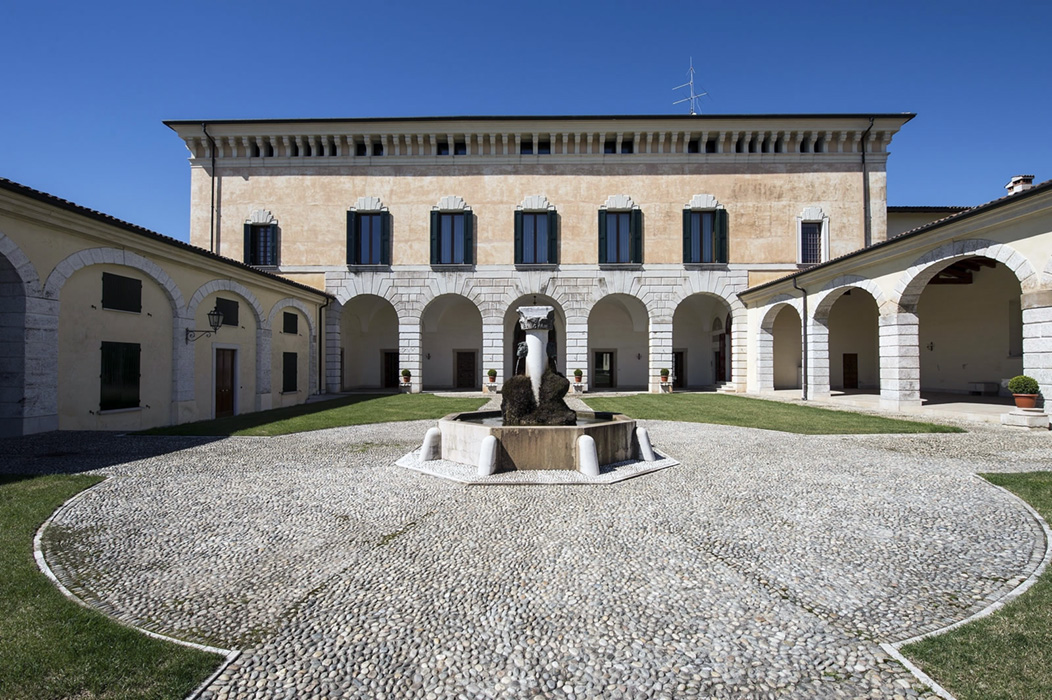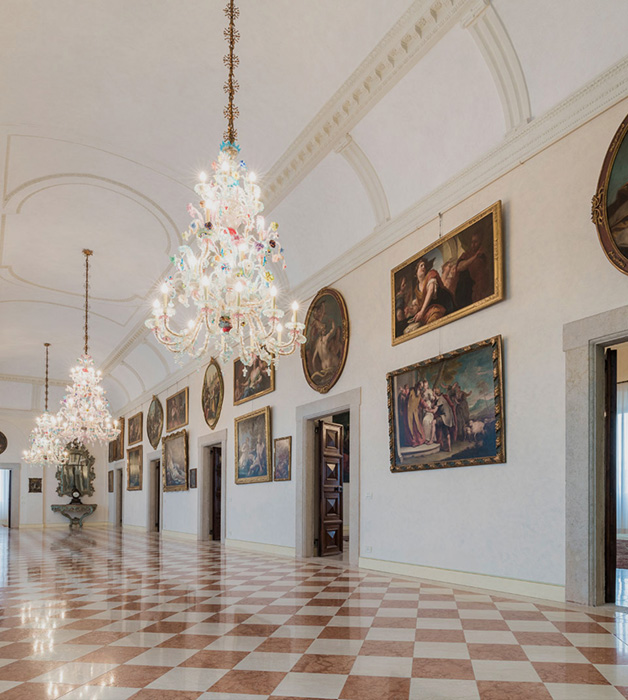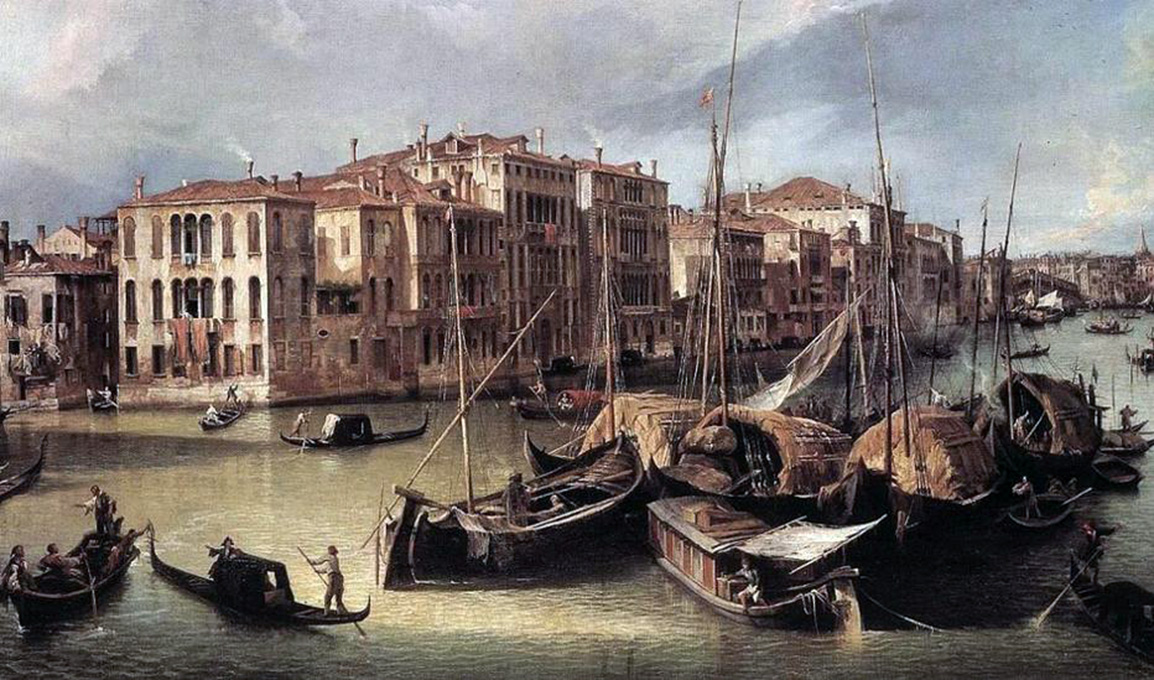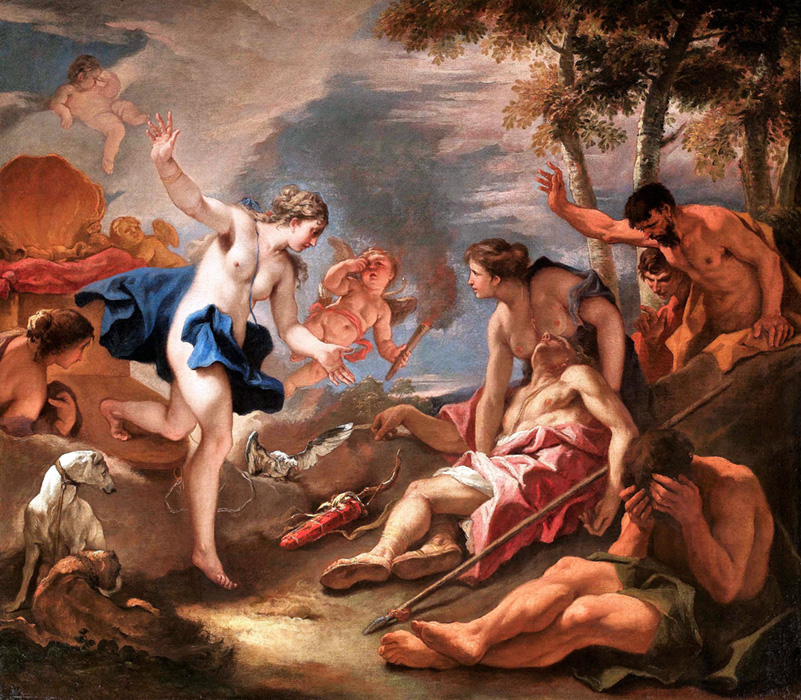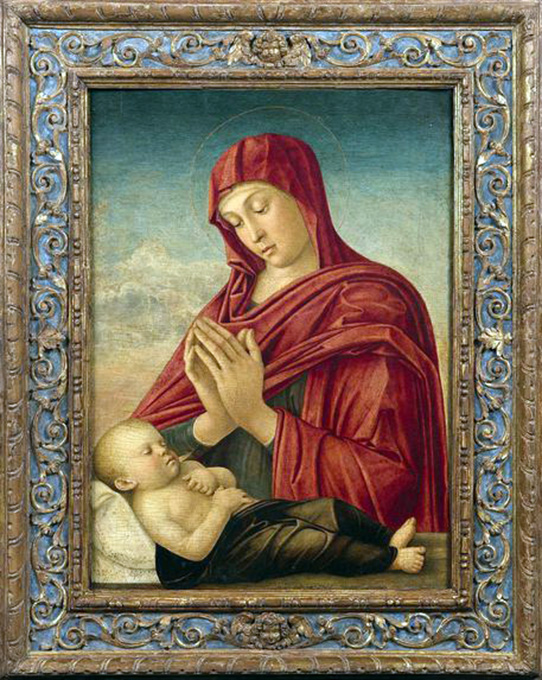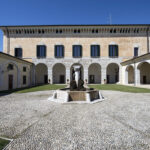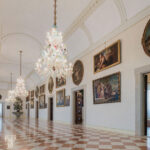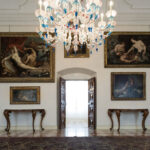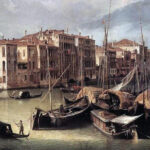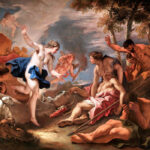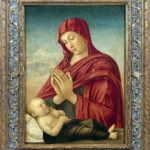MarteS – Museo d’arte Sorlini
The building that houses the MarteS Museum is a typical 17th-century Brescia palace, characterized by a massive main body whose entrance allows one to understand the nature of a much more articulated and extensive architectural complex.
From the entrance doorway, defined by an elegant rusticated portal, one can perceive the main perspective axis that passes through the entrance hall, crosses a large courtyard defined upstream by the palace portico and on the sides by two barns with wide arches, and leads to the border of the “brolo” (a garden enclosed by walls), closed by an imposing rusticated archway topped by two obelisks.
Under the portico, the busts of Antonio and Stefano Sorlini, respectively father and uncle of Luciano, have been placed. In the center of the courtyard stands an ancient fountain, transformed into a fountain and enriched by a lush flowering of “capelvenere,” a spontaneous fern that Luciano Sorlini personally cared for. In the center of the “brolo” is the large bronze sculpture depicting Mars, executed by the Brescia artist Federico Severino (to whom Luciano Sorlini also entrusted the design of the bronze handles of the access doors to the exhibition rooms of the Museum in the form of mermaids).
The palace, built for the Buzzoni family, passed to the noble Bruni Conter family, from whom Luciano Sorlini purchased it, undertaking a radical restoration project aimed at eliminating the superstructures, maintaining the original floor plans, and enhancing the decorative elements characterized mainly by elegant and sober 17th-century stuccoes. The noble floor and the large reception rooms were never inhabited by the Sorlini family: Luciano Sorlini reserved for himself the 19th-century wing, which in some cases is embellished with 19th-century wall decorations.
In the actual palace, Luciano Sorlini conceived the placement of the Collection, which was progressively increasing, never depriving himself of the daily enjoyment of his favorite artworks that he carefully arranged in the rooms where he lived. The small living room that included the works of the beloved Pietro and Alessandro Longhi (Venice 1733-1813), the bedroom with the Christ and the Samaritan Woman by Giandomenico Tiepolo (Venice 1727-1804), and the Madonna with Child by Francesco Fontebasso (Venice 1707-1769) deserve to be remembered.
The secondary courtyard follows the main one, whose flower beds host two large olive trees, while the third courtyard shows 15th-century architecture decorated with frescoes, perhaps a testimony to an ancient monastic settlement in this area of Calvagese. The chapel of the palace deserves a special mention, dedicated to St. Philip Neri, on whose altar is placed the altarpiece by Francesco Ricchino (student of Alessandro Bonvincino, known as “il Moretto”), signed and dated 1572 and depicting the Annunciation with St. Francis and St. Jerome.
The history of the collection
Sorlini, fascinated by the world of art, directed his curiosity towards antique painting, preferring it to contemporary art, despite his strong interest in modern design. The period in which he began to acquire art was the 1970s, when Venetian art was definitively rediscovered by the international antique market and exhibition events intensified the knowledge of the arts of the Serenissima.
It was during this period that Luciano Sorlini met Egidio Martini (1919-2011), a scholar of eighteenth-century Venetian painting, but also a restorer and collector himself. Some works initially arrived at Sorlini on the recommendation of Egidio Martini, until Luciano, having refined his knowledge and spurred on by an innate instinct for quality, became autonomous in his choices.
The Sorlini Collection is dedicated to eighteenth-century Venetian art and precisely reflects the interests of “Signor Luciano” (as he was called by everyone): the paintings initially arrived to complete the furnishings of his residences, first and foremost the Venetian palace on the Grand Canal known as “Grimani dall’Albero d’oro” in Campo San Polo.
In addition to the great names – Tiepolo, Ricci, Guardi, Canaletto, Rosalba Carriera – there are also painters who are not as well-known, but fundamental to the overall understanding of the figurative arts of the Serenissima: Pittoni, Diziani, Molinari, Bellucci, Fontebasso, and many others.
The caution of the Brescian entrepreneur was fueled by a strong common sense that prevented him from focusing on artists who were “too trendy.” He asserted that with the money necessary for a mediocre Canaletto, he would much prefer to bring home masterpieces by artists who were less sought after by the market, but certainly more satisfying.
Therefore, it is the luminous, cheerful, and brightly colored painting that Luciano Sorlini likes the most, especially in the early stages of his research. It is from the late 1990s that a change is felt, when apparently unexpected works arrive in the Collection: the Madonna by Giovanni Bellini (Venice 1430-1516) is the most eloquent case. It is a high-period painting by a prestigious author, which caused a surge in Luciano Sorlini, motivated by the possibility of acquiring it.
Another exceptional “stroke” was the purchase of the cycle of 6 large canvases by Gianantonio Guardi (Vienna 1699-Venice 1760). Concurrent with this change is the decision to establish an organization to entrust the maintenance of his collection: the Luciano Sorlini Foundation.

